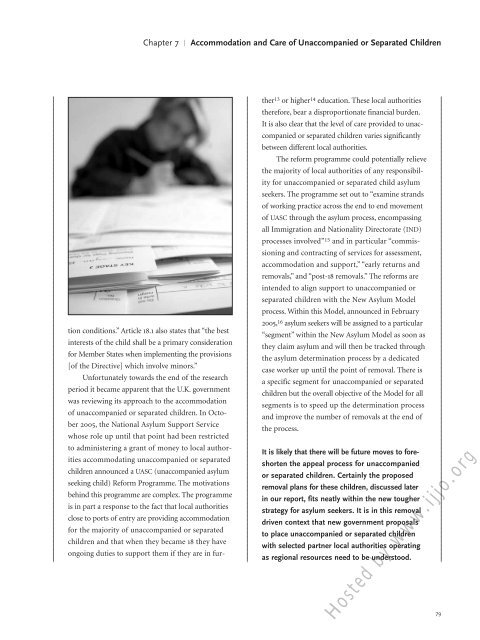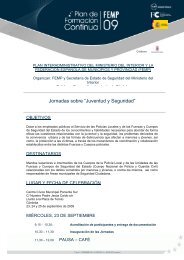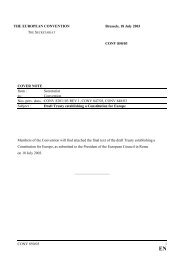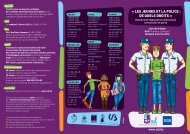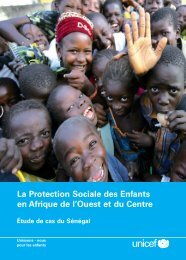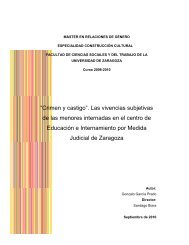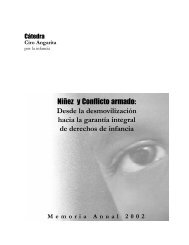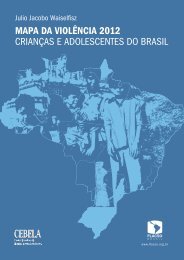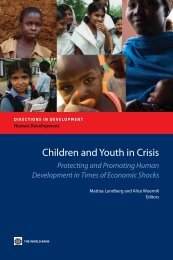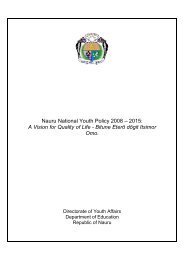Hosted by www.ijjo.org
Hosted by www.ijjo.org
Hosted by www.ijjo.org
Create successful ePaper yourself
Turn your PDF publications into a flip-book with our unique Google optimized e-Paper software.
Chapter 7 | Accommodation and Care of Unaccompanied or Separated Children<br />
tion conditions.” Article 18.1 also states that “the best<br />
interests of the child shall be a primary consideration<br />
for Member States when implementing the provisions<br />
[of the Directive] which involve minors.”<br />
Unfortunately towards the end of the research<br />
period it became apparent that the U.K. government<br />
was reviewing its approach to the accommodation<br />
of unaccompanied or separated children. In October<br />
2005, the National Asylum Support Service<br />
whose role up until that point had been restricted<br />
to administering a grant of money to local authorities<br />
accommodating unaccompanied or separated<br />
children announced a UASC (unaccompanied asylum<br />
seeking child) Reform Programme. The motivations<br />
behind this programme are complex. The programme<br />
is in part a response to the fact that local authorities<br />
close to ports of entry are providing accommodation<br />
for the majority of unaccompanied or separated<br />
children and that when they became 18 they have<br />
ongoing duties to support them if they are in further<br />
13 or higher 14 education. These local authorities<br />
therefore, bear a disproportionate financial burden.<br />
It is also clear that the level of care provided to unaccompanied<br />
or separated children varies significantly<br />
between different local authorities.<br />
The reform programme could potentially relieve<br />
the majority of local authorities of any responsibility<br />
for unaccompanied or separated child asylum<br />
seekers. The programme set out to “examine strands<br />
of working practice across the end to end movement<br />
of UASC through the asylum process, encompassing<br />
all Immigration and Nationality Directorate (IND)<br />
processes involved” 15 and in particular “commissioning<br />
and contracting of services for assessment,<br />
accommodation and support,” “early returns and<br />
removals,” and “post-18 removals.” The reforms are<br />
intended to align support to unaccompanied or<br />
separated children with the New Asylum Model<br />
process. Within this Model, announced in February<br />
2005, 16 asylum seekers will be assigned to a particular<br />
“segment” within the New Asylum Model as soon as<br />
they claim asylum and will then be tracked through<br />
the asylum determination process <strong>by</strong> a dedicated<br />
case worker up until the point of removal. There is<br />
a specific segment for unaccompanied or separated<br />
children but the overall objective of the Model for all<br />
segments is to speed up the determination process<br />
and improve the number of removals at the end of<br />
the process.<br />
It is likely that there will be future moves to foreshorten<br />
the appeal process for unaccompanied<br />
or separated children. Certainly the proposed<br />
removal plans for these children, discussed later<br />
in our report, fits neatly within the new tougher<br />
strategy for asylum seekers. It is in this removal<br />
driven context that new government proposals<br />
to place unaccompanied or separated children<br />
with selected partner local authorities operating<br />
as regional resources need to be understood.<br />
<strong>Hosted</strong> <strong>by</strong> <strong>www</strong>.<strong>ijjo</strong>.<strong>org</strong><br />
79


